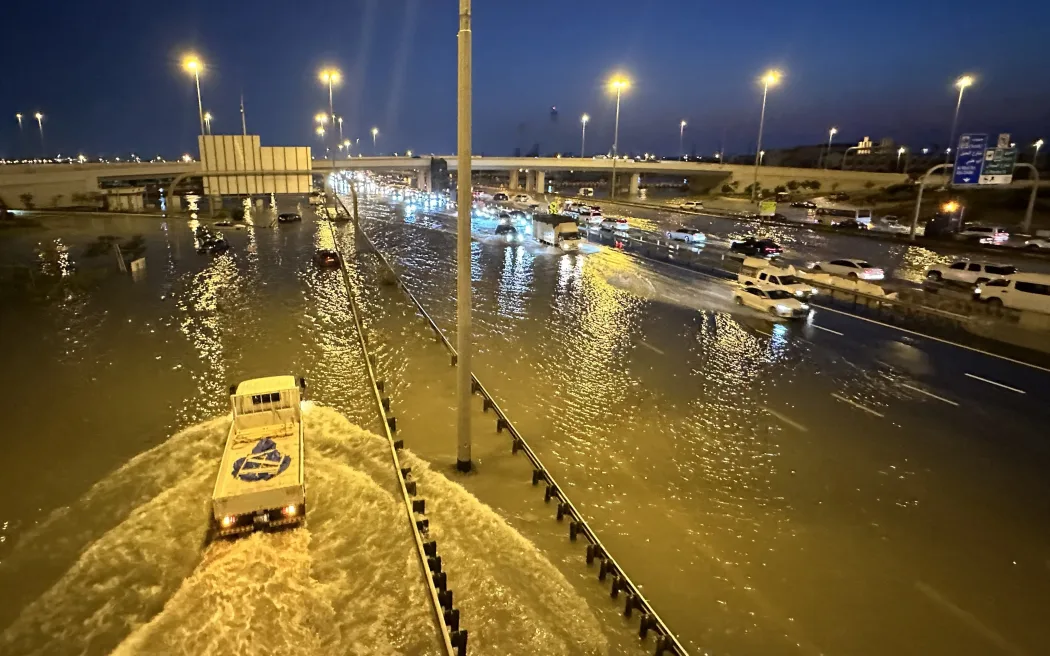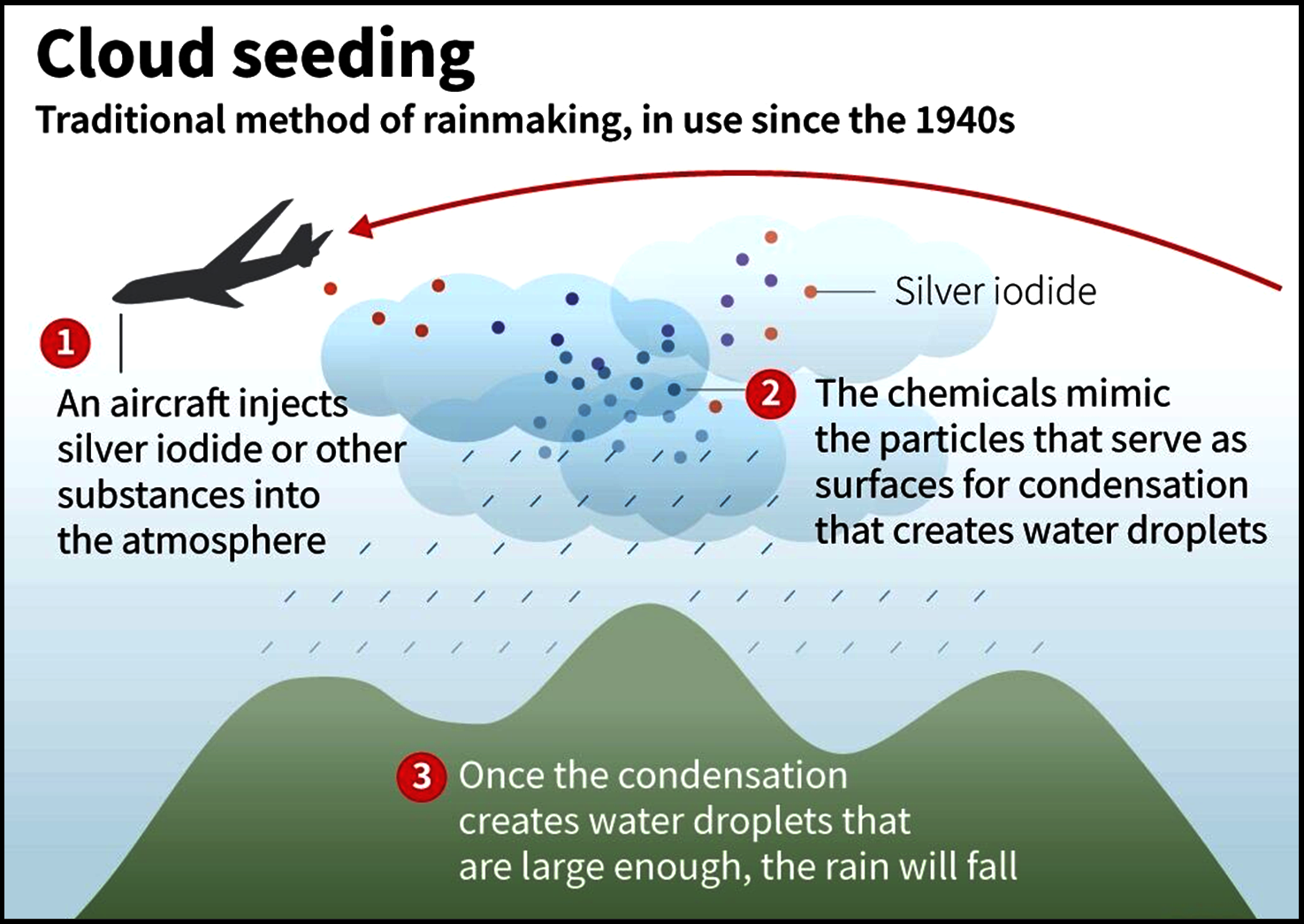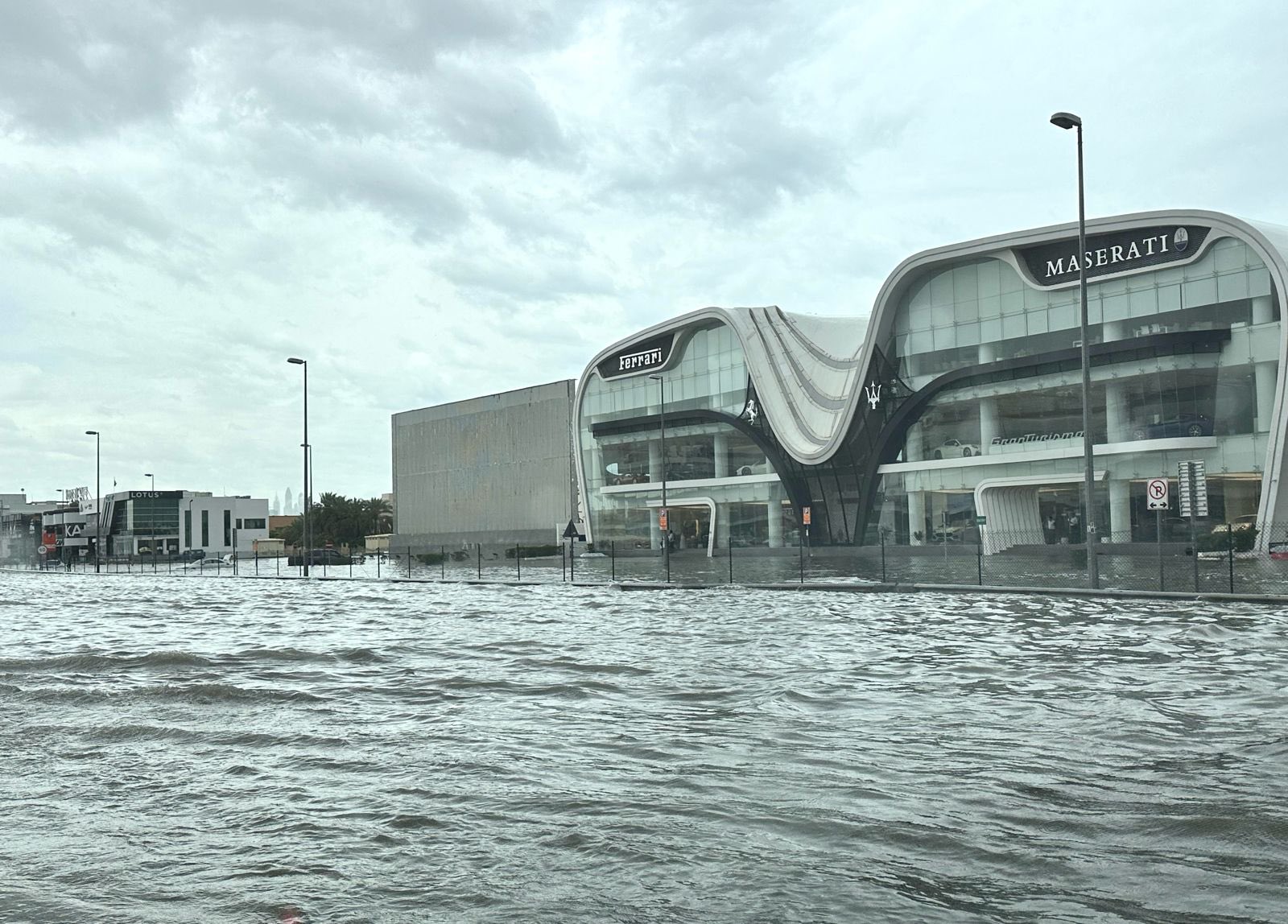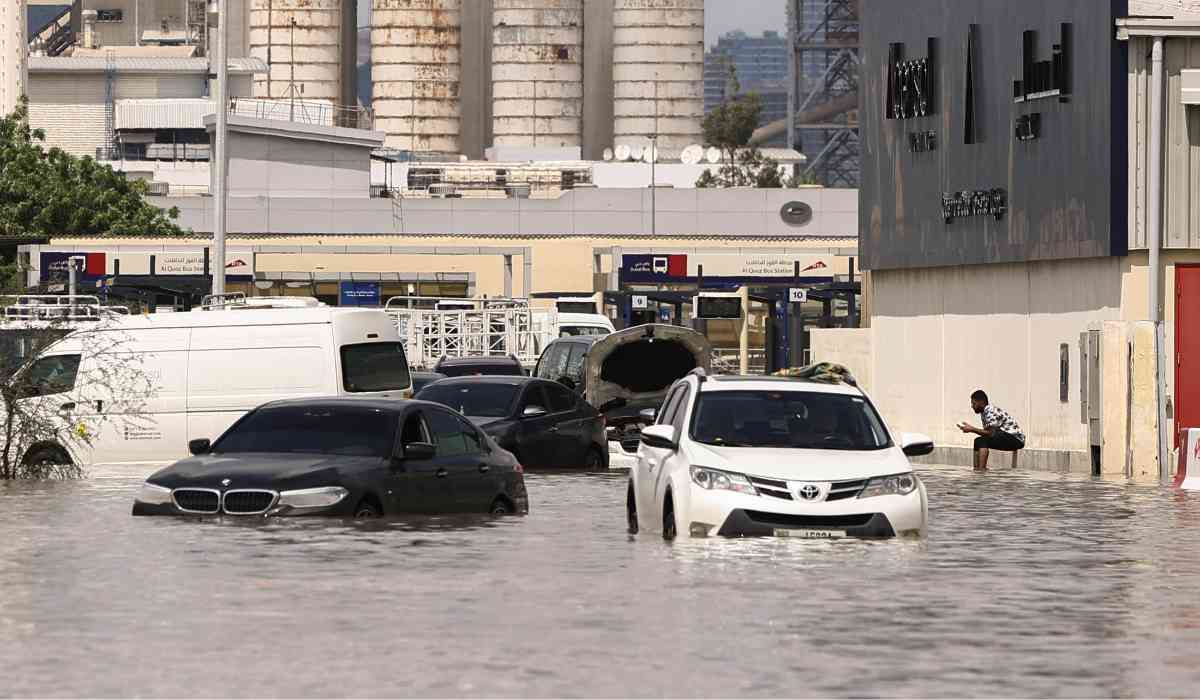Rainfall is uncommon in the UAE and elsewhere in the Arabian Peninsula, which is well known for its dry environment. The summertime heat can reach highs of more than 50 degrees Celsius (122 degrees Fahrenheit). In addition to lacking adequate drainage infrastructure to handle severe rains, the UAE and Oman frequently have inundated roads during rainy seasons.
The United Arab Emirates (UAE) was swamped with water on Tuesday when storms dumped more than a year and a half's worth of rain in a matter of hours, drowning highways and the international airport in Dubai. At least 20 individuals lost their lives as a result of flooding and strong rainfall in nearby Oman.

Social media users speculated that the exceptional precipitation was caused by cloud seeding, which involves manipulating existing clouds to generate rain. However, researchers say that climate change is most likely to blame for the record rainfall. Here's what you need to know about cloud seeding and the causes of the record rainfall and consequent flooding in the UAE and Oman.
What is Cloud Seeding?
Cloud seeding is a type of weather modification process that normally tries to increase the rain or snow. Cloud droplets don’t form spontaneously. For moisture to condense, it needs a surface to cling to. Within a cloud, there are tiny particles in the air called condensation nuclei, which provide a base for moisture to attach to. Cloud seeding uses planes and ground-based cannons to shoot particles into clouds making more nuclei, and attracting moisture. Once enough droplets merge, they become heavy and fall to Earth as rain or snow.
Small particles like dust and dirt frequently play an important role in cloud formation and precipitation by providing surfaces for moisture to condense. Silver iodide might theoretically perform the same purpose. Other substances, such as dry ice, can be used for similar reasons. The technology, developed in the 1940s, cannot produce water from a clear sky; particles must be blasted into a cloud that already contains moisture to cause it to fall, or to fall more than it would naturally.

Cloud seeding is still controversial in the weather community, owing to the difficulty in proving its effectiveness, as well as the uncertainty around its potentially harmful influence. Governments in drought-stricken areas like the Western United States and the UAE have invested in technology like seeding in the hopes of generating rain.
Around 50 countries use cloud seeding, including the United States, China, Australia, the United Arab Emirates, Germany, India, Malaysia, Russia,, and Mexico. Last year, the US Bureau of Reclamation spent $2.4 million on cloud seeding along the Colorado River, which is over-tapped. Utah has just upped its seeding budget nearly tenfold. Seeding is a common method of irrigation in China. It was also employed to clean the skies during the 2008 Olympics in Beijing.

What spurred the rumors that Dubai's rains were caused by cloud seeding?
Meteorologists from the UAE's National Centre for Meteorology (NCM) told reporters that Dubai flew six or seven cloud-seeding flights before the rains began. Flight-tracking data analyzed by The Associated Press news agency revealed that one aircraft associated with the UAE's cloud-seeding efforts went throughout the country on Monday. According to sources, the NCM said on Wednesday that the seeding occurred on Sunday and Monday, not Tuesday.

Omar Al Yazeedi, deputy director general of the NCM, told NBC News that the organization "did not conduct any seeding operations during this event. One of the basic principles of cloud seeding is that you have to target clouds in their early stages before it rains; if you have a severe thunderstorm situation, then it is too late to conduct any seeding operation," he said.
What exactly transpired in the UAE and Oman?
The storm first struck Oman on Sunday before pounding the UAE on Tuesday, knocking out electricity and disrupting flights. In Dubai, the flood submerged homes, clogged roads, and kept residents stranded in their houses.
Authorities reported that the UAE had the greatest rainfall on record. It was described as "a historic weather event" by the state-run news agency WAM, surpassing "anything documented since the start of data collection in 1949." That was before to the discovery of crude oil in the Gulf's energy-rich nation.

By the end of Tuesday, more than 142mm (5.59 inches) had soaked Dubai, which is home to almost three million people. Nearly 127mm (5 inches) of rain poured at Dubai International Airport, while the average annual rainfall is 76mm (3 inches).
Oman had almost 230mm (9 inches) of rain between Sunday and Wednesday, according to the authorities. The capital, Muscat, receives roughly 100mm (4 inches) of rain on average annually. It rained in Saudi Arabia, Bahrain, and Qatar as well.
(Inputs by Agencies)
Ⓒ Copyright 2024. All Rights Reserved Powered by Vygr Media.























